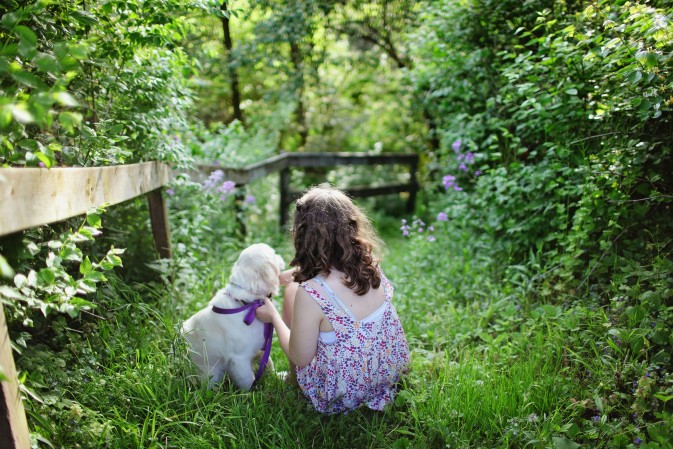Many parents ponder the question: “Is it a good idea to get a dog for my kids?” Bringing a dog into the family can be a wonderful experience, but it also comes with responsibilities. This blog explores the benefits and important considerations to help you decide if getting a dog is the right choice for your family.
Benefits of Getting a Dog for Kids
Emotional Benefits
Companionship and Unconditional Love: Dogs offer constant companionship and unconditional love, which can be incredibly comforting for children.
Reducing Anxiety and Stress: Having a dog around can help reduce anxiety and stress, providing a sense of security and comfort.
Enhancing Empathy and Compassion: Taking care of a dog can teach children empathy and compassion, as they learn to understand and meet the needs of their pet.
Physical Benefits
Encouraging Outdoor Activities and Exercise: Dogs need regular walks and playtime, encouraging kids to be more active and spend time outdoors.
Boosting Immune System: Exposure to pet allergens in early childhood can help strengthen the immune system and reduce the risk of allergies later in life.
Developmental Benefits
Teaching Responsibility and Routine: Caring for a dog requires daily tasks such as feeding, grooming, and walking, helping children learn responsibility, and establishing routines.
Improving Social Skills and Confidence: Interacting with a dog can improve a child’s social skills and boost their confidence, as they navigate the responsibilities of pet ownership.
Considerations Before Getting a Dog
Family Lifestyle
Assessing Time Commitment and Daily Routines: Consider if your family has the time to care for a dog. Dogs need regular attention, exercise, and care.
Evaluating Family’s Readiness: Discuss with your family if everyone is ready for the commitment of a pet. A dog will become a part of your daily life for many years.
Financial Responsibility
Estimating Costs: Owning a dog involves expenses such as food, vet bills, grooming, and supplies. Make sure your family budget can accommodate these costs.
Planning for Long-Term Commitment: Dogs live for many years, so it’s important to be prepared for a long-term financial commitment.
Living Space
Suitability of Home Environment: Ensure your home has enough space for a dog to live comfortably. Consider if your yard is secure and if there are nearby parks for exercise.
Safe and Comfortable Space: Make sure there is a designated, safe area in your home for the dog to eat, sleep, and play.
Choosing the Right Dog
Breed Considerations
Kid-Friendly Dog Breeds: Research breeds known for being good with children. Consider size, temperament, and energy levels to find a good match for your family.
Size and Energy Levels: Some dogs require more space and exercise than others. Choose a breed that fits your living situation and activity level.
Adoption vs. Buying
Benefits of Adopting from Shelters: Adopting a dog from a shelter can save a life and often comes with the benefit of knowing the dog’s background and temperament.
Responsibilities of Buying from Breeders: If buying from a breeder, ensure they are reputable and prioritize the health and well-being of their dogs.
Preparing Your Kids and Home for a Dog
Education and Training
Teaching Kids Safe Interaction: Educate your children on how to safely interact with the dog, such as being gentle and recognizing signs of stress or discomfort in the dog.
Basic Dog Training: Prepare for basic dog training, including commands like sit, stay, and come. This helps establish boundaries and good behavior.
Home Preparations
Designated Dog Area: Set up a specific area in your home for the dog to eat, sleep, and play. This helps the dog feel secure and know where to go.
Dog-Proofing the House: Ensure your home is safe for a dog by removing hazardous items and securing areas that may pose a danger.
Integrating the Dog into the Family
Introducing the Dog to Kids
Smooth Introduction Process: Introduce the dog to your kids gradually. Allow the dog to explore and get comfortable in the new environment.
Monitoring Interactions: Supervise initial interactions between your kids and the dog to ensure they are positive and safe.
Creating a Routine
Establishing Daily Routine: Create a consistent routine for feeding, walking, and playtime. This helps the dog adjust and ensures its needs are met.
Balancing Dog Care with Kids’ Activities: Find a balance between caring for the dog and your children’s activities and school schedules.
Frequently Asked Questions
1. What is the best age for a child to get a dog?
While there’s no perfect age, many experts suggest waiting until a child is at least 5 years old. At this age, children can understand basic guidelines for interacting with and caring for a dog.
2. Are certain dog breeds better for families with young children?
Yes, some breeds are known for being particularly good with children. Breeds like Golden Retrievers, Labrador Retrievers, Beagles, and Bulldogs are often recommended for families with young kids due to their friendly and gentle nature.
3. How can I teach my child to be responsible for a dog?
Assign age-appropriate tasks such as feeding, grooming, and walking the dog. Create a chore chart and praise your child for their efforts. Over time, this can help instill a sense of responsibility and routine.
4. What if my child is afraid of dogs?
Start by exposing your child to calm and friendly dogs in controlled environments. Encourage gentle interactions and provide positive reinforcement. Patience and gradual exposure can help alleviate fear over time.
5. How do I ensure my dog is safe around my young children?
Always supervise interactions between your dog and young children. Teach your kids to be gentle and avoid rough play. Ensure your dog has a safe space to retreat to when it needs a break.
Conclusion
In summary, getting a dog for your kids can bring numerous benefits, from emotional support to teaching responsibility. However, it’s crucial to consider your family’s lifestyle, financial situation, and readiness for a long-term commitment. Take the time to research and prepare, ensuring a positive experience for both your family and your new furry friend.




